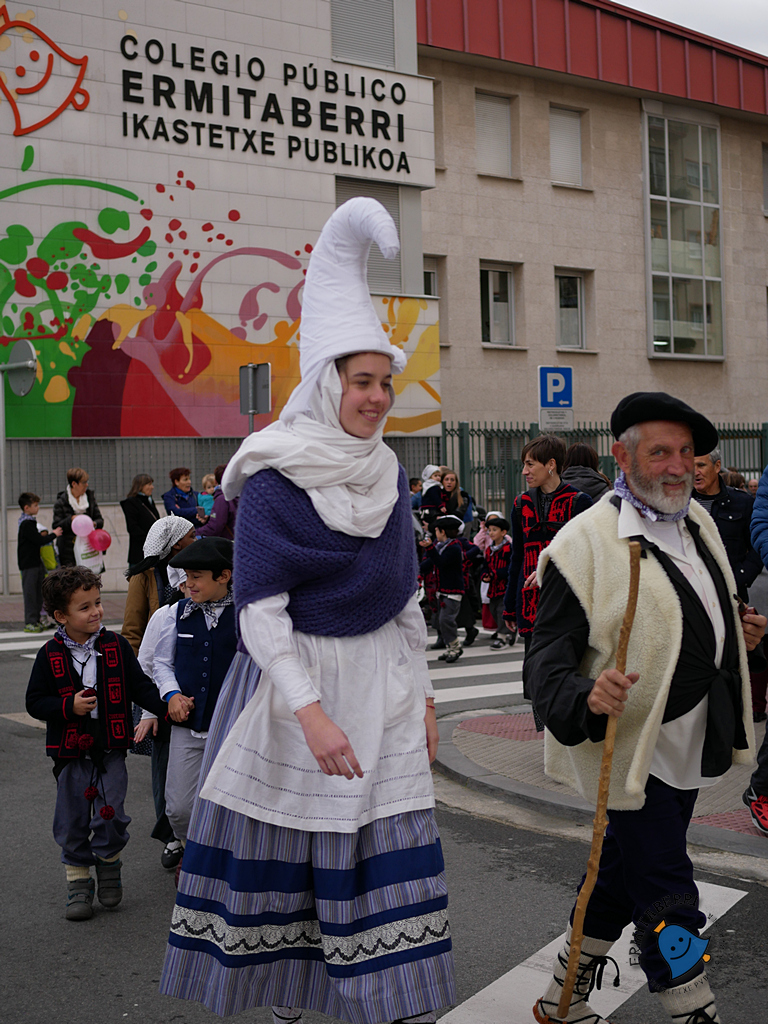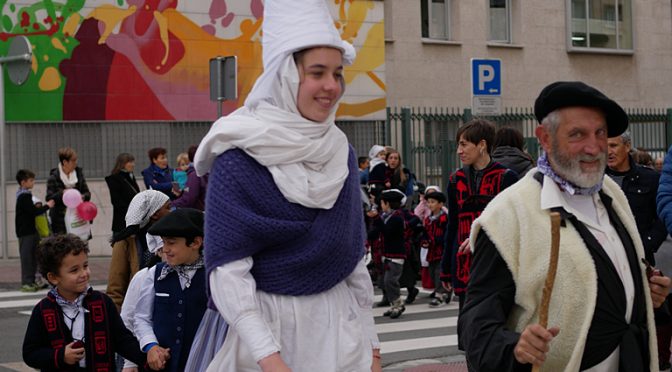These days, Olentzero, the Basque “Santa Claus” who brings gifts to children during Christmas, is reasonably well recognized in the Basque diaspora. He not only visits children in Euskal Herria, but can often be found in Basque clubs in the United States, South America, and elsewhere. Even the New Mexico Euskal Etxea, back when it was active, saw Olentzero come for a visit at one of our Christmas parties. Less well known is his companion and accomplice, Mari Domingi, who is often found at Christmas celebrations in the Basque Country.

- Mari Domingi has her origins as a Christmas figure in the 1990s. As a character, she was created in Donosti in 1994 to add gender balance to the Basque Christmas festivities. Her story was first told in a booklet of stories published by the Asociación de Ikastolas in the Antiguo district. The first image of Mari Domingi was created by illustrator Edorta Murua, while the story was written by Mitxel Murua. She was originally created as a character called Xixuko who was simply supposed to collect letters to deliver to Olentzero, but her role grew quickly and she became his co-equal as a bringer of Christmas in the Basque Country.
- She was inspired by a popular Christmas song Horra Mari Domingi, collected by Resurrección María de Azkue, in which Mari Domingi wants to visit Bethlehem to see the newborn Christ child. She is told that she needs change her skirt, to put on something a bit more presentable, before she can go.
- As Olentzero’s accomplice, she is described as a shepherd and a farmer. She knows the land, the phases of the moon, and the use of medicinal plants. She typically dresses in medieval costume, characterized by the tall headdresses Basque women used to wear in the 15th century. This is in contrast to Olentzero’s costume, which dates to a later time.
- Mari Domingi loves apples, and rather than the cookies that kids leave for Santa, she prefers that a plate of apples, preferably roasted, be left for her instead.
- These days, it is common to see Mari Domingi in the streets with Olentzero on Christmas Eve. Together, they deliver presents to the children that have written them letters. The more mischievous kids, though, get coal, which is an interesting twist as it was said that Olentzero originally gave coal to people to help keep them warm in older times. Coal has shifted from something good to give as a present to something bad.
- The creation of Mari Domingi is not without controversy. Some view her creation as the result of political correctness gone too far, while others see her as an attempt to rewrite Basque traditions. Whatever one’s opinion of her is, it cannot be denied that she is becoming an important aspect of modern Basque celebrations of Christmas.
Primary sources: Mari Domingi, Wikipedia
Discover more from Buber's Basque Page
Subscribe to get the latest posts sent to your email.


